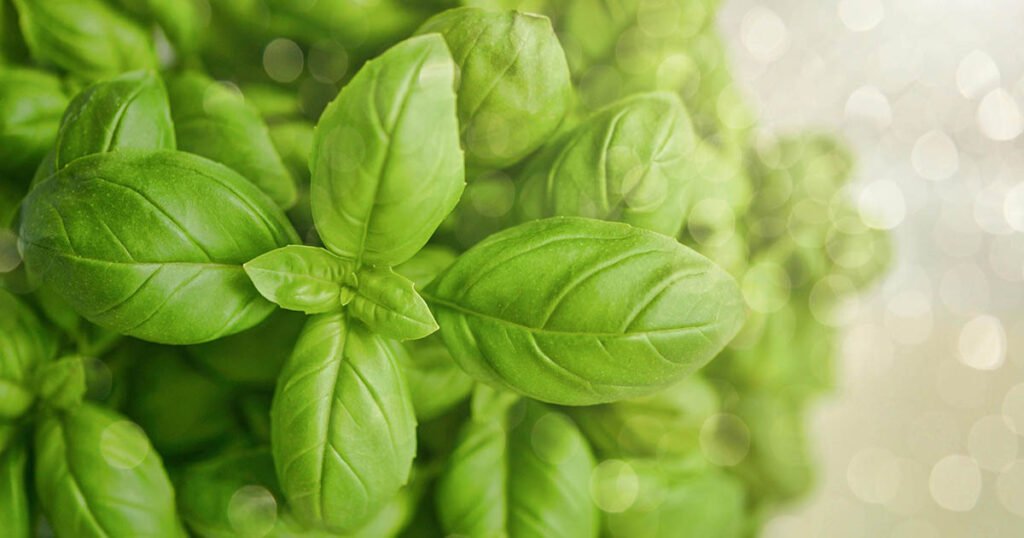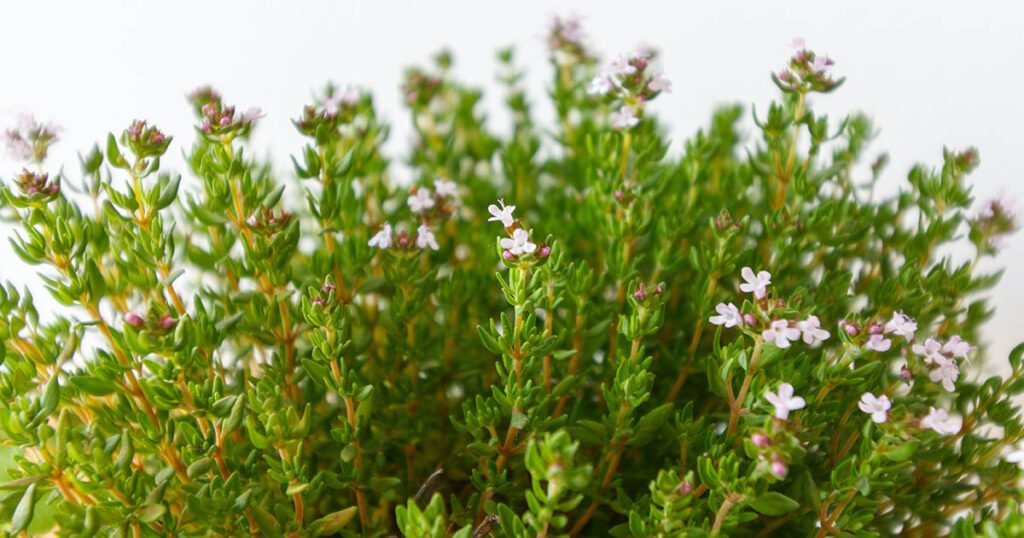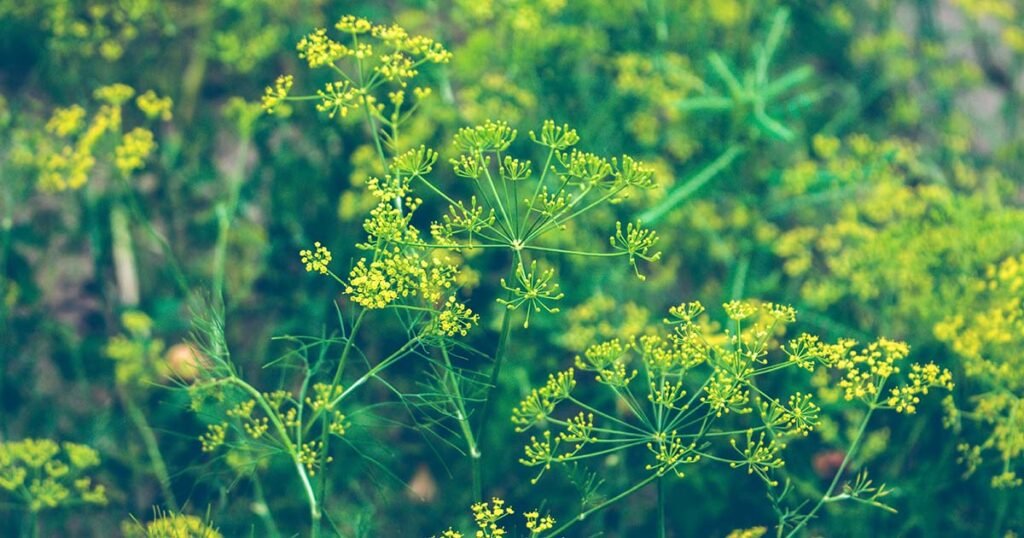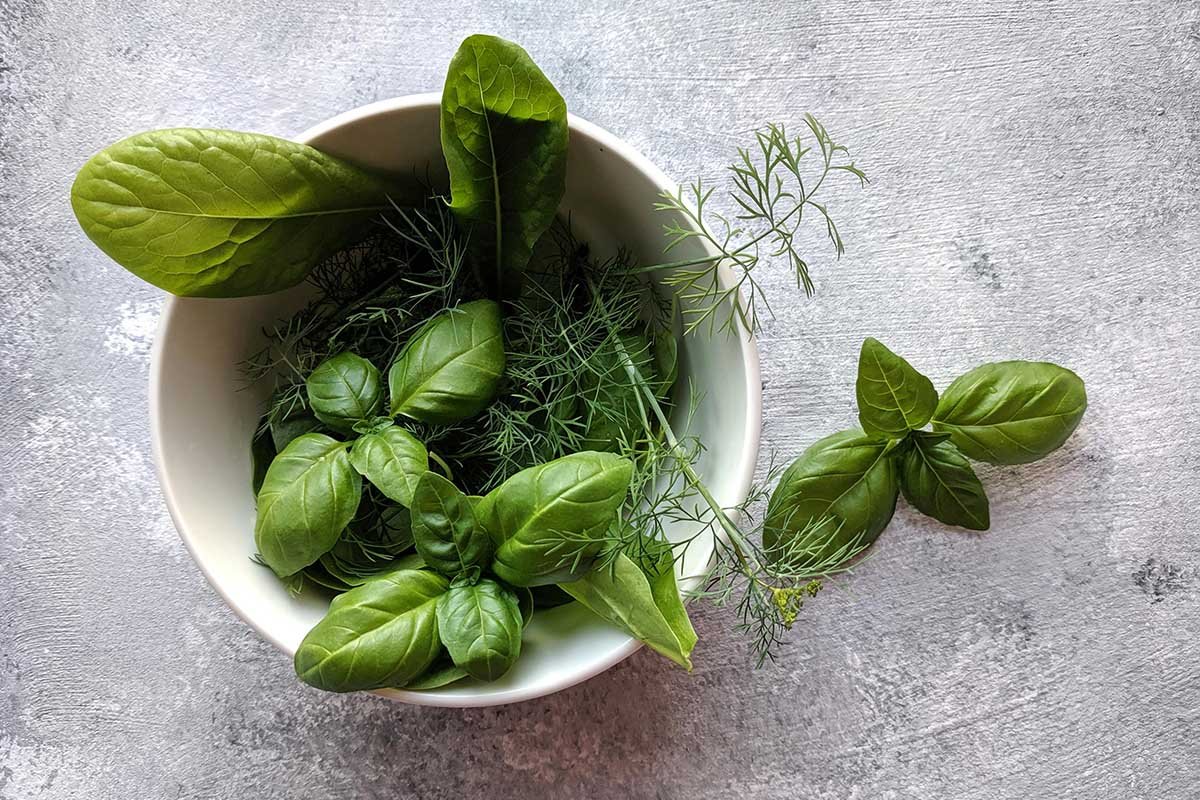Indoor herb gardening lets you harvest vibrant, aromatic herbs no matter the season, right from the comfort of your home. Growing herbs like basil, mint, and rosemary is easier than you think, and incredibly rewarding. In this guide, we’ll reveal the 10 best herbs to grow indoors all year long, including tips on their flavours, ideal growing conditions, and how long you need to wait to harvest.
Why Grow Herbs Indoors?
Growing herbs indoors offers:
- Year-round greenery: 24/7 access (even during the winter) to fresh and flavourful herbs. Plant anytime and harvest when ready.
- Control over growing conditions: Tailor light levels, soil mixes, humidity and temperature to your herbs’ needs
- Cost-savings: Compared to shop-bought produce, often charged at a premium for its “freshness”
- Eco-Friendly: Reduce your carbon footprint by growing food inside your home. Can’t get any more local than that!
By cultivating your indoor herb garden, you ensure peak freshness, flavour, and sustainability.
Key Considerations for Indoor Herb Growth
Light Requirements
- Most herbs thrive with 6–8 hours of bright light.
- Use south‑facing windows or invest in LED grow lights.
Container & Soil
- Pot in containers with drainage holes.
- Use well‑draining potting mix with perlite or vermiculite.
Water & Humidity
- Water when the topsoil is dry. Avoid over‑watering.
- Maintain room humidity (40–60%) using trays or humidifiers.
Temperature & Airflow
- Ideal range: 18–24 °C (65–75 °F) during the day, slightly cooler at night.
- Circulate air gently to prevent mould and pests
Top 10 Herbs To Grow Indoors Year-Round
Below is a handpicked list of low-maintenance, highly productive and flavourful herbs you can grow indoors. You’ll notice the large range in harvest times; the more optimal the conditions in the section above, the shorter the harvest time.
Basil
Harvest time: 30-45 days
Common varieties: Genovese, Thai, Purple, Lemon, Sweet
Flavour pairing: Tomatoes, mozzarella, garlic, lemon
Used in: Pesto, Caprese salad, pasta sauces, Thai dishes
A fragrant, tender herb known for its sweet, slightly peppery flavour and clove-like aroma. A key ingredient in Mediterranean and Southeast Asian cuisines.
Pro tips: Pinch off flower buds to encourage more leaf growth. Store fresh basil in a jar of water at room temperature. Don’t refrigerate it, as cold can damage the leaves.

Mint
Harvest time: 20-30 days
Common varieties: Spearmint, Peppermint, Chocolate, Apple
Flavour pairing: Lamb, chocolate, cucumber, lime
Used in: Mojitos, teas, lamb dishes, tabbouleh
A refreshing herb with a cool, sweet taste. Widely used in drinks, desserts, and savoury dishes.
Pro tips: Mint spreads aggressively, avoid planting in containers with other herbs or risk losing them. Regular trimming keeps it bushy and flavourful.
Parsley
Harvest time: ~90 days
Common varieties: Italian Flat-Leaf, Curly Leaf
Flavour pairing: Lemon, garlic, chickpeas, olive oil
Used in: Soups, sauces, tabbouleh, garnishes
A versatile herb with a fresh, grassy taste. Curly parsley is often used as a garnish, while flat-leaf parsley has a more robust flavour for cooking.
Pro tips: Harvest outer stems first to keep the plant producing. Store in a glass of water in the fridge with a loose plastic cover for longer freshness.
Coriander (Cilantro)
Harvest time: ~30 days
Common varieties: Slow Bolt, Calypso, Santo
Flavour pairing: Lime, chilli, avocado, cumin
Used in: Salsa, guacamole, curries, pho
Known for its bright, citrusy flavour, coriander is essential in Latin American, Indian, and Southeast Asian cuisines.
Pro tips: Coriander deteriorates quickly in heat, plant in cooler months or partial shade. You can harvest coriander seeds once the plant flowers and goes to seed.
Thyme
Harvest time: ~1 year (from seed)
Common varieties: English, Lemon, French, Creeping
Flavour pairing: Mushrooms, beef, chicken, lemon
Used in: Roasted meats, stews, stuffing, soups
A woody herb with earthy, lemony notes. Its small leaves pack a strong flavour, ideal for slow-cooked dishes.
Pro tips: Growing thyme from seed can be time-consuming; propagating or buying an already established plant is advisable. Strip leaves from stems by running your fingers in the opposite direction of growth. Drought-tolerant and thrives in well-drained soil.

Oregano
Harvest time: 60-90 days
Common varieties: Greek, Italian, Syrian, Mexican
Flavour pairing: Tomatoes, olives, feta, lamb
Used in: Pizza, tomato sauces, Greek salads
Robust and aromatic with a slightly bitter taste, oregano is a Mediterranean staple, especially in tomato-based dishes.
Pro tips: Oregano intensifies when dried, use fresh for a milder flavour. Prune regularly to encourage dense growth.
Chives
Harvest time: 60-90 days
Common varieties: Common Chives, Garlic Chives
Flavour pairing: Eggs, potatoes, sour cream, salmon
Used in: Omelettes, baked potatoes, soups, dips
Delicate, grass-like herb with a mild onion or garlic flavour. Excellent for adding a fresh kick to dishes at the end of cooking.
Pro tips: Snip with scissors above the soil line, never pull. They’ll regrow quickly. Chives also produce edible purple flowers.
Rosemary
Harvest time: ~1 year (from seed)
Common varieties: Tuscan Blue, Arp, Prostrate, Barbecue
Flavour pairing: Potatoes, lamb, lemon, garlic
Used in: Roasted meats, focaccia, stews
Strong, piney aroma with a woody flavour. Excellent for hearty roasts, stews, and breads.
Pro tips: Avoid overwatering, rosemary prefers dry soil. You can dry or freeze sprigs for long-term use without losing too much flavour. Similarly to thyme, it’s much quicker to grow rosemary by taking cuttings and propagating.
Sage
Harvest time: ~1-2 years
Common varieties: Common Sage, Purple Sage, Pineapple Sage
Flavour pairing: Brown butter, pork, pasta, pumpkin
Used in: Stuffings, sausages, brown butter sauces
A soft-leaved herb with warm, earthy tones and slightly peppery flavour. Pairs beautifully with rich autumn dishes.
Pro tips: Use sparingly, it has a strong flavour. Sage also dries well for storage and maintains much of its potency. Sage is another herb with a long time to maturity; you can reduce this by ~6 months by propagating from cuttings.
Dill
Harvest time: ~60 days
Common varieties: Bouquet, Fernleaf, Mammoth Long Island
Flavour pairing: Yoghurt, cucumbers, salmon, mustard
Used in: Pickles, fish dishes, potato salad, tzatziki
Light, feathery herb with a grassy, tangy flavour. Perfect in creamy sauces, seafood, and pickles.
Tip: Dill is delicate and quick to bolt (flower), plant in succession for a longer harvest. Add fresh dill at the end of cooking to preserve its flavour.

Additional Tips to Maximise Yield
- Rotate plants weekly: Ensures even light exposure
- Succession planting: Re-plant fast growers immediately after harvest
- Regular pruning: Maintains shape and encourages leafy growth
- Label: Each pot with the herb name and sow date
- Fertilise: Feed every 4-6 weeks with organic, balanced fertiliser
Frequently Asked Questions (FAQs)
Q: Which indoor herbs are easiest for beginners?
A: Mint, chives, basil, parsley and oregano are forgiving and thrive in low‑to‑bright light with minimal care. Taste great too!
Q: Can I grow herbs with just natural light?
A: Yes, place herbs by a south‑facing window for a minimum of 6 hours of direct light.
Q: How do I prevent mould on indoor herbs?
A: Ensure pots have good drainage, avoid over‑watering, and allow airflow (fan or open window).
Q: When should I harvest herbs for peak flavour?
A: Harvest in the morning before hotter temperatures and before the plant starts to flower. Avoid harvesting more than a 1/5th of the plant at a time to ensure strong regrowth.
